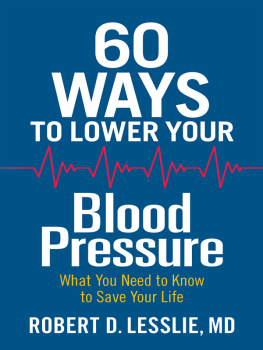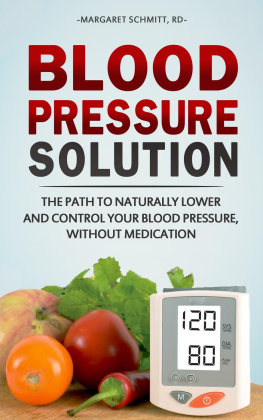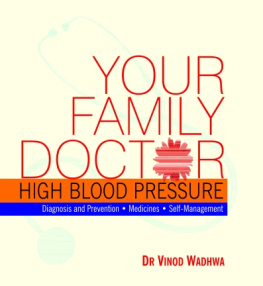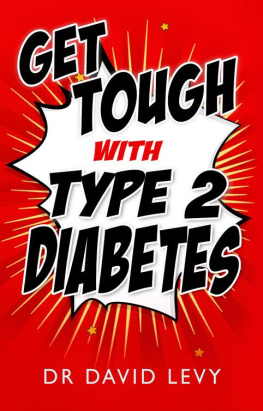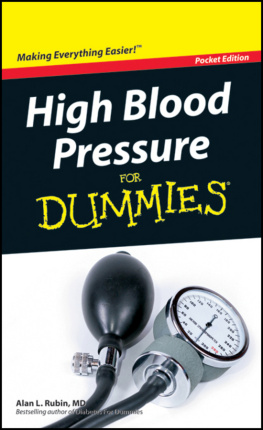Table of Contents
Pagebreaks of the print version
Guide

5 Steps to Controlling High Blood Pressure provides reliable, practical information on preventing and managing high blood pressure. Much of the information comes directly from the experience of health care professionals at Mayo Clinic. This book supplements the advice of your personal physician, whom you should consult for individual medical conditions.
5 Steps to Controlling Blood Pressure does not endorse any company or product. MAYO, MAYO CLINIC and the Mayo triple-shield logo are marks of Mayo Foundation for Medical Education and Research.
All rights reserved. No part of this book may be reproduced or used in any form or by any means, electronic or mechanical, including photocopying and recording, or by any information storage and retrieval system, without permission in writing from the publisher, except by a reviewer, who may quote brief passages in review.
For bulk sales to employers, member groups and health-related companies, contact Mayo Clinic Global Business Solutions, 200 First Street SW, Rochester, MN 55905, or send an email to .
Published by Mayo Clinic
2015 Mayo Foundation for Medical Education and Research (MFMER)
ISBN e-Pub edition: 9780795347788
Library of Congress Control Number: 2014950079
Second Edition
1 2 3 4 5 6 7 8 9 10
Editorial staff
Medical Editor
Sheldon G. Sheps, M.D.
Managing Editor
Stephanie K. Vaughan
Editorial Director
Paula M. Marlow Limbeck
Product Manager
Christopher C. Frye
Art Directors
Stewart (Jay) J. Koski
Richard A. Resnick
Production Artist
Gunnar T. Soroos
Illustration and Photography
John V. Hagen
Joanna R. King
Michael A. King
Richard Madsen
Kent McDaniel
Jodi OShaughnessy Olson
Jay Rostvold
Veneliza Salcedo
Chris Srnka
Research Manager
Deirdre A. Herman
Research Librarians
Anthony J. Cook
Amanda K. Golden
Erika A. Riggin
Proofreading
Miranda M. Attlesey
Donna L. Hanson
Julie M. Maas
Indexing
Steve Rath
Contributors
Brent A. Bauer, M.D.
Robert D. Brown Jr., M.D.
Matthew M. Clark, Ph.D., L.P.
Carl H. Cramer II, M.D.
John W. Graves, M.D.
Roger W. Harms, M.D.
Donald D. Hensrud, M.D.
Richard D. Hurt, M.D.
Carrie A. Krieger, Pharm.D., R.Ph.
Edward R. Laskowski, M.D.
Carol A. Nash, R.N.
Jennifer K. Nelson, R.D., L.D.
Heather R. Preston
Dennis M. Robertson, M.D.
Gary L. Schwartz, M.D.
Virend Somers, M.D., Ph.D.
Sandra J. Taler, M.D.
Stephen T. Turner, M.D.
Kristin S. Vickers Douglas, Ph.D., L.P.
Administrative Assistant
Michelle L. Griffis
Preface
High blood pressure is a serious problem. According to the American Heart Association, more than 76 million American adults have been diagnosed with high blood pressure, but less than half of them have their condition well-managed.
A primary goal of 5 Steps to Controlling High Blood Pressure is to inform you about how high blood pressure develops, what puts you at risk, how its diagnosed and how its treated. Youll also learn how to reduce your risk of the many conditions associated with high blood pressure, such as coronary artery disease, heart failure, kidney failure, stroke and dementia. Youll read about the proper use of medications, home monitoring and regular follow-up care. Youll also find the latest on issues of concern to women, children and special at-risk populations. All of this will help as you work with your doctor to make informed decisions regarding your health care.
5 Steps to Controlling High Blood Pressure focuses on the central role you play in a treatment program. It highlights five key steps you can take to manage your blood pressure: eating a healthy diet, managing salt intake, getting regular physical activity, avoiding use of tobacco and limiting alcohol and how well you take medications. Separately, each step can improve your overall health and lower your blood pressure. When combined, the steps form a personalized program suited to your needs.
High blood pressure can almost always be successfully managed. This book, along with the advice of your personal physician, can assist you in living a longer, healthier life.

Sheldon G. Sheps, M.D.
Medical Editor
Introduction
A plan for life
Contrary to what you may believe, you were not born to have high blood pressure. Your health is influenced as much by lifestyle as it is by genes. While family history is important, your weight, activity level, stress level and health habits play large roles in determining your future.
What this means is that your future isnt predestined. You are in the drivers seat you can play a vital role in managing your blood pressure and your overall health. The sooner you commit yourself to improving your lifestyle, the greater your chances of enjoying a long, productive life.
You may already know some facts about high blood pressure. Its a common condition, especially among older adults. Its associated with other conditions such as stroke, heart attack, heart failure, kidney failure and dementia. Its called the silent killer because it develops with no signs or symptoms you may not know that you have the condition until after it has caused serious damage to your organs.
Heres something else that you should know: You can almost always control high blood pressure at levels that reduce your risk of serious cardiovascular disease. Medications are an important element of this control. But equally important is how well you take care of yourself. Weight, diet, exercise, tobacco and alcohol use, and stress are all aspects of your life that you can manage and try to change.
Throughout the chapters in this book are assessments to help you evaluate the health habits that most often influence your blood pressure: Are you physically fit? Are you eating well? Are you bothered by stress? Are you getting enough sleep? Keep in mind that good health is more than good physical health. It also includes good mental health. Mind and body are intricately intertwined the state of one greatly influences that of the other.
Use the results from these assessments to identify general areas or specific behaviors that you can work on to control your blood pressure and put you on the path to better overall health.
For example, you may find that youre getting enough physical activity but your diet could use a nutritional boost. Or you may feel that stress is preventing you from getting enough sleep.
The simple steps you take now to improve your health will, over time, turn into sustainable, healthy behaviors that can improve your nutrition and level of physical activity, as well as lower your blood pressure. Youll not only reduce your risk of disease and illness but also feel better and look great!
An important note: Dont view these assessments as a substitute for seeing your doctor. As youll learn in this book, regular exams are important for tracking your progress, identifying problems, getting direction and coaching, and adjusting medications. For a complete health assessment, its important to enlist the expertise of a health care professional.


